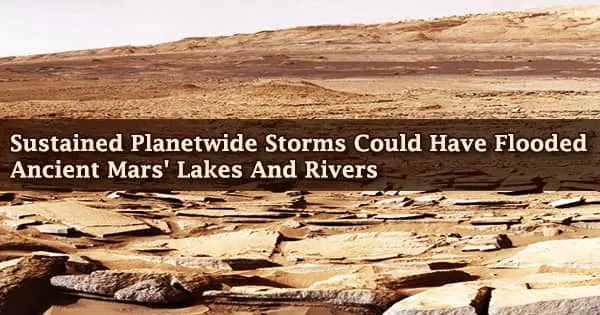A new study from The University of Texas at Austin is assisting scientists in piecing together Mars’ ancient climate by revealing how much rainfall and snowmelt filled the planet’s lake beds and river valleys between 3.5 and 4 billion years ago.
The study, which was published in the journal Geology, is the first to quantify the amount of precipitation that must have been present across the planet, and it comes as the Mars 2020 Perseverance rover prepares to settle in one of the lake beds vital to this new research.
The ancient environment of Mars remains a mystery to scientists. The existence of riverbeds and eons-old lake basins provides a picture of a planet with significant rainfall or melting, according to geologists.
However, climate experts have been unable to recreate an ancient climate with huge amounts of liquid water present for long enough to account for the observed geology using computer climate models of the planet.
“This is extremely important because 3.5 to 4 billion years ago Mars was covered with water. It had lots of rain or snowmelt to fill those channels and lakes,” said lead author Gaia Stucky de Quay, a postdoctoral fellow at UT’s Jackson School of Geosciences.
“Now it’s completely dry. We’re trying to understand how much water was there and where did it all go.”
Despite the fact that enormous volumes of frozen water have been discovered on Mars, there is currently no considerable amount of liquid water.
Researchers discovered that a single episode of precipitation had to be between 13 and 520 feet (4 to 159 meters) to fill the lakes and, in certain circumstances, supply enough water to overrun and breach the lake basins.
This is extremely important because 3.5 to 4 billion years ago Mars was covered with water. It had lots of rain or snowmelt to fill those channels and lakes. Now it’s completely dry. We’re trying to understand how much water was there and where did it all go.
Gaia Stucky de Quay
Despite the wide range, Stucky de Quay believes it may be used to determine whether climate models are reliable.
“It’s a huge cognitive dissonance,” she said. “Climate models have trouble accounting for that amount of liquid water at that time. It’s like, liquid water is not possible, but it happened. This is the knowledge gap that our work is trying to fill in.”
The researchers studied 96 open-basin and closed-basin lakes, as well as their watersheds, that are considered to have developed between 3.5 and 4 billion years ago. Overflowing water has ruptured open lakes; closed lakes, on the other hand, are unaffected.
They analyzed lake and watershed areas, lake volumes, and accounted for potential evaporation using satellite imagery and terrain to figure out how much water was needed to fill the lakes.
The researchers was able to calculate a minimum and maximum precipitation by looking at ancient closed and open lakes, as well as the river valleys that fed them. The closed lakes show the largest amount of water that may have fallen in a single occurrence without breaching the lake basin’s side.
The open lakes demonstrate the bare minimum of water required to overtop the lake basin, causing the water to break and flow out.
Researchers uncovered connected basins in 13 occurrences, each including one closed and one open basin supplied by the same river valleys, providing vital evidence of both maximum and minimum precipitation in a single event.
Another big question is how long the rain or snowmelt event lasted: days, years, or thousands of years. According to Stucky de Quay, this is the next step in the research.
NASA recently dispatched the Mars 2020 Perseverance Rover to visit Jezero crater, which features one of the open lake basins used in the study, as this paper was published.
Tim Goudge, a co-author and assistant professor in the UT Jackson School Department of Geological Sciences, was the landing site’s major scientific champion. He believes the crater’s data will be useful in assessing the amount of water on Mars and whether there is evidence of past life.
“Gaia’s study takes previously identified closed and open lake basins, but applies a clever new approach to constrain how much precipitation these lakes experienced,” Goudge said. “Not only do these results help us to refine our understanding of the ancient Mars climate, but they also will be a great resource for putting results from the Mars 2020 Perseverance Rover into a more global context.”
This study was supported by a grant through NASA’s Mars Data Analysis Program.





